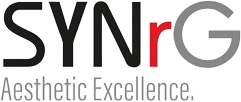
Contemporary dental therapy is changing rapidly. One of the most beneficial tools now is using digital planning to aid full arch restorations. This software enables dental professionals to work with greater precision, and precision is crucial when placing multiple or all missing teeth with implants. The application of Guided Solutions in Buford is assisting numerous clinics in providing more predictable solutions, particularly when it comes to full arch support such as All-on-4 or All-on-6.
Planning Makes a Difference in Implant Dentistry
Planning makes all the difference when placing more than one implant. Digital technology enables dentists to plan every step before the work begins. That includes mapping out the locations of implants ahead of time, according to the shape of each patient’s jaw and bones. With good planning, the staff can prevent surprises and minimize the time it takes during surgery.
What Is Guided Implant Surgery?
Guided implant surgery involves a computer map of the patient’s jaw and mouth through which the precise location of the implants is planned. A user-designed guide is then made to be placed over the gums or teeth. The guide indicates to the dental team where each implant should be located. The transparent design makes it easier to enhance safety and reduce the likelihood of mistakes. One of the primary benefits of guided implant surgery is the increased control and precision provided through full arch restorations.
Enhancing Safety and Minimizing Surprises
Using digital tools to design the work beforehand, several complications can be identified in advance. This smooths out the surgery and makes it more predictable. Digital imaging reveals significant details such as locations of the nerves and bone levels. This decreases the likelihood of complications during the process and protects surrounding structures within the jaw.
How Guided Tools Improve Full Arch Restorations
When replacing the whole set of teeth, precision is even more critical. All implants should be inserted at the right angle and depth to support the final teeth. The guide avoids having any implant inserted in the wrong spot. This enhances the final tooth fit and longevity. That’s why clinics are increasingly adopting digital guides for All-on-4 and All-on-6 procedures.
Time-Saving and Efficient
Since the plan is already established before the surgery, the chair time is usually shorter. The guide facilitates quicker and more accurate placement of implants. This reduces the amount of time the patient must spend in the clinic. Patients are also in most cases able to resume their normal lives earlier, which contributes to their comfort and confidence in the treatment.
Is This Method Accurate?
You may be wondering, how accurate is guided implant surgery? Research indicates that guided surgery is more precise than freehand. The guides are created from a 3D scan of the patient’s mouth, so they’re custom-fit. This amount of planning results in a superior fit for implants reduces the risk of harm, and makes them feel more natural in the end.
Less Room for Human Error
Even the best dentists may struggle with freehand placement. Guided surgery reduces the risk of human error by providing visual assistance and stable guidance. It is like a GPS for the dentist’s hands, which leads them to the precise location. This assists even in more complicated cases, for instance, when the patient has lower bone levels or difficult angles of the jaw.
Improved Communication With the Lab
When digital tools are employed, sharing the treatment plan with the dental lab becomes simpler. The lab is well aware of what it should do and can construct the final teeth based on the positions of the implants according to the digital plan. In this way, the lab can fabricate teeth that will better match the patient’s smile and bite.
Comfort for the Patient
Having confidence that the dentist is working with guided support can reassure patients. It’s reassuring to know the work is founded on thorough planning and not guesswork. This helps patients feel more comfortable and perhaps less fearful of the treatment. And, because the plan is more precise, there’s generally less swelling or discomfort following the surgery.
Long-Term Success With Guided Support
Precise placement of implants is good for the long-term health of the mouth. If implants are placed precisely, they will have a good chance to last for years and years. This also decreases the amount of repair or additional work they may need down the road. In the case of a full arch, this can be huge in terms of the patient feeling good about their smile and about proceeding with care.
Clear Steps Lead to Better Results
From digital scans to final positioning, guided tools provide a direct path from beginning to end. Not only does this assist the dental team, but it also streamlines the experience for the patient. Having digital systems means less surprise and more peace of mind.
Supporting the Modern Dental Team
Guided solutions are not about taking the place of the dentist—they are about providing the dentist with greater control and insight. With more effective planning tools, even difficult cases can be treated with ease. That’s why digital assistance is becoming a central component of full arch restoration work in a lot of clinics.
Seeking Advanced Care?
At Synrg Lab, we assist dentists and clinics with excellent planning and guided instruments to ensure full-arch restorations are more precise and comfortable for patients. If you’re planning a full-arch treatment with a local dental professional, ask if they employ guided assistance. It might make all the difference in your outcome.
Get Ready to Enjoy Superior Planning
Computer-aided planning solutions enable better results and less anxiety. If you need reliable care with the technology behind it, call Synrg Lab today. We’re here to assist your dental team with solutions that result in clearer plans, smoother procedures, and healthier smiles. Discover more about how guided solutions can assist you in achieving a lasting outcome.
